De Bono - Lateral thinking : a textbook of creativity
Here you can read online De Bono - Lateral thinking : a textbook of creativity full text of the book (entire story) in english for free. Download pdf and epub, get meaning, cover and reviews about this ebook. City: London, New York, year: 1970, publisher: Viking;Penguin Books, genre: Religion. Description of the work, (preface) as well as reviews are available. Best literature library LitArk.com created for fans of good reading and offers a wide selection of genres:
Romance novel
Science fiction
Adventure
Detective
Science
History
Home and family
Prose
Art
Politics
Computer
Non-fiction
Religion
Business
Children
Humor
Choose a favorite category and find really read worthwhile books. Enjoy immersion in the world of imagination, feel the emotions of the characters or learn something new for yourself, make an fascinating discovery.
Lateral thinking : a textbook of creativity: summary, description and annotation
We offer to read an annotation, description, summary or preface (depends on what the author of the book "Lateral thinking : a textbook of creativity" wrote himself). If you haven't found the necessary information about the book — write in the comments, we will try to find it.
The classic work about improving creativity from world-renowned writer and philosopher Edward de Bono. In schools we are taught to meet problems head-on: what Edward de Bono calls vertical thinking. This works well in simple situations - but we are at a loss when this approach fails. What then? Lateral thinking is all about freeing up your imagination. Through a series of special techniques, in groups or working alone, Edward de Bono shows how to stimulate the mind in new and exciting ways. Soon you will be looking at problems from a variety of angles and offering up solutions that are as ingenious as they are effective. You will become much more productive and a formidable thinker in your own right. If more bankers and traders had read Lateral Thinking and applied the ideas of Edward de Bono to their own narrow definitions of risk, reward and human expectations, I suspect we would be in much better shape than we are. (Sir Richard Branson). Edward de Bono invented the concept of lateral thinking. A world-renowned writer and philosopher, he is the leading authority in the field of creative thinking and the direct teaching of thinking as a skill. Dr de Bono has written more than 60 books, in 40 languages, with people now teaching his methods worldwide. He has chaired a special summit of Nobel Prize laureates, and been hailed as one of the 250 people who have contributed most to mankind. Dr de Bonos titles include classic bestsellers such as Six Thinking Hats, Lateral Thinking, I Am Right You Are Wrong, Teach Yourself How To Think, Teach Your Child How To Think, and Simplicity - all now re-issued by Penguin.
ReviewIf more bankers and traders had read Lateral Thinking and applied the ideas of Edward de Bono to their own narrow definitions of risk, reward and human expectations, I suspect we would be in much better shape than we are. Sir Richard Branson
About the AuthorEdward de Bono invented the concept of lateral thinking. A world-renowned writer and philosopher, he is the leading authority in the field of creative thinking and the direct teaching of thinking as a skill. Dr de Bono has written more than 60 books, in 40 languages, with people now teaching his methods worldwide. He has chaired a special summit of Nobel Prize laureates, and been hailed as one of the 250 people who have contributed most to mankind. Dr de Bonos titles include classic bestsellers such as Six Thinking Hats, Lateral Thinking, I Am Right You Are Wrong, Teach Yourself How To Think, Teach Your Child How To Think, and Simplicity - all now re-issued by Penguin. www.edwdebono.com
De Bono: author's other books
Who wrote Lateral thinking : a textbook of creativity? Find out the surname, the name of the author of the book and a list of all author's works by series.

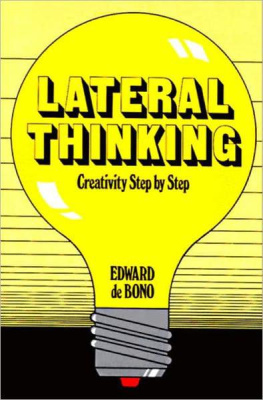
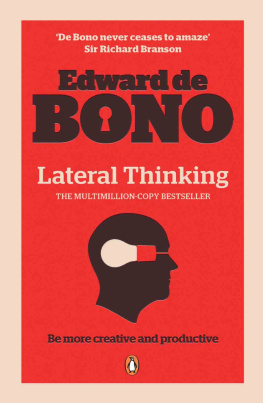
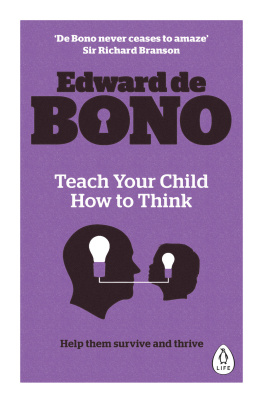



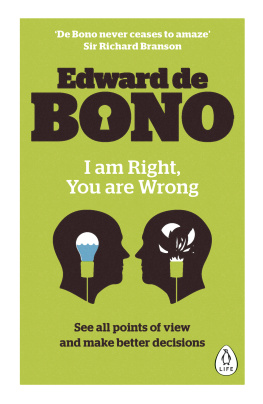
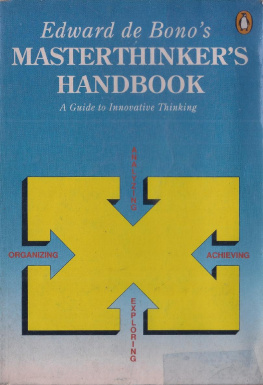


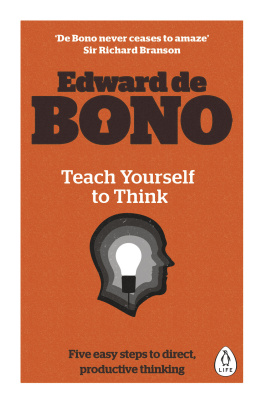

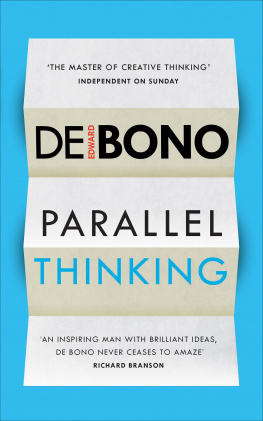

 To assume that it is obvious and that everyone thinks laterally anyway.
To assume that it is obvious and that everyone thinks laterally anyway.